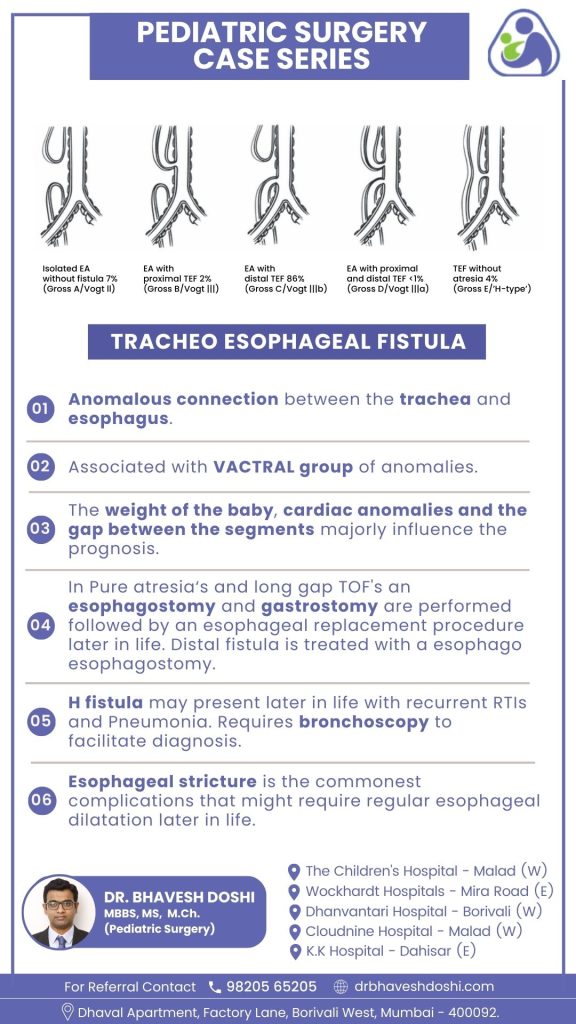Tracheo Esophageal Fistula (TEF)
Tracheoesophageal fistula (TEF) refers to an abnormal connection between the trachea and esophagus. This congenital anomaly is frequently observed in major pediatric surgical centers and is often part of the VACTRAL group of anomalies. The classic presentation includes respiratory distress, feeding challenges, and a heightened risk of aspiration, making it a significant concern in infants. The prognosis is notably influenced by factors such as the baby’s weight, associated cardiac anomalies, and the extent of the gap between the segments. TEF is commonly found in conjunction with other congenital issues, particularly cardiac defects.
How is Pure Atresia and Long Gap Tracheoesophageal Fistula (TOF) managed initially?
In cases of Pure Atresia and long-gap TOF, initial management involves creating an esophagostomy and gastrostomy. These procedures provide a means for feeding the infant and addressing the absence or gap in the esophagus. However, definitive repair or replacement of the esophagus is usually delayed until later in the child’s life.
What is the approach for managing Distal Fistula in TOF cases?
For cases with a distal fistula, the treatment involves esophagus-esophagostomy. This surgical procedure aims to create continuity in the esophagus, ensuring proper functioning of the upper gastrointestinal tract.
What complications may arise in cases of H-type Fistula, and how are they diagnosed?
H-type fistulas can present later in life with recurrent respiratory infections (RTIs) and pneumonia. Diagnosis typically involves bronchoscopy, a procedure allowing direct visualization of the fistula, confirmation of its presence, and assessment of any associated respiratory issues.

What is a common long-term complication after esophageal procedures, and how is it managed?
Esophageal stricture is a frequent long-term complication. It involves the narrowing of the esophagus, which can impede proper swallowing. Regular esophageal dilatation is the management approach, where the narrowed portion is gently widened through medical procedures to maintain proper esophageal function.



